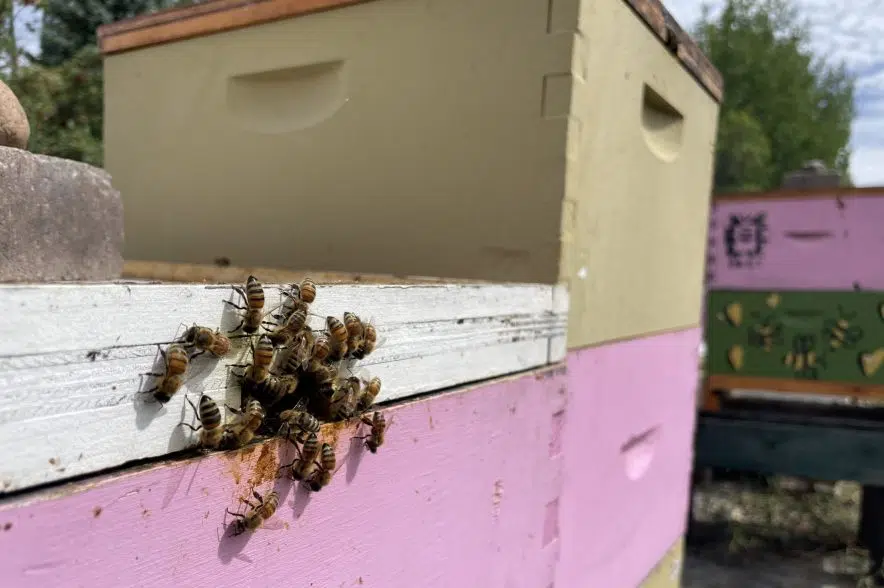The drought this summer has posed few problems for Kelly Frizzell’s bees, but she is still keeping a close eye on her colonies.
Frizzell, a beekeeper and owner of Bee Local Honey & Bee ’N Me Products, said as long as she puts out extra water or keeps the hive located near a water source, the bees typically like warm conditions.
Environment Canada predicted a hot week with weather in the 30s starting Monday.
“Whether it’s dry or moist, I suppose that it doesn’t really matter. (The bees) will make sure it’s the right humidity when they cap it,” said Frizzell.
When bees bring in nectar to a cell, they cap it with wax when it reaches the right humidity. Bees can bring down the temperature by beating their wings.
The bees need to keep their hives nice and warm at just over 32 C or 90 F to keep their brood growing. The brood are the eggs or larvae that the bees have within the hive.
“They will cool it off if it’s too hotter than that, or warm it up if it’s cooler than that,” said Frizzell.
Bees also fan their wings to act like an air conditioning unit and to control the temperature by beating their wings next to the entrance of the hive – something that Frizzell sees in the hot conditions.
“They will cool themselves off by just fanning with their wings. If it’s too hot inside the hive, you’ll often see them outside the hive,” said Frizzell.
In her hives, she often notices that the bees will “washboard” outside the hive when it is very hot.
Washboarding is when the bees rock back and forth outside of the hive in a rhythmic way. There is no determined scientific reason for washboarding.
During a drought, Frizzell noticed the honey can be a little more dry.
There have been no colony losses with the drought for Frizzell, but last year one of her hives died, and the year before she lost 75 per cent of her colony.
In the past, Frizzell said that wasp infestations are one of the causes that led to her colony losses. Dry conditions are more manageable.













